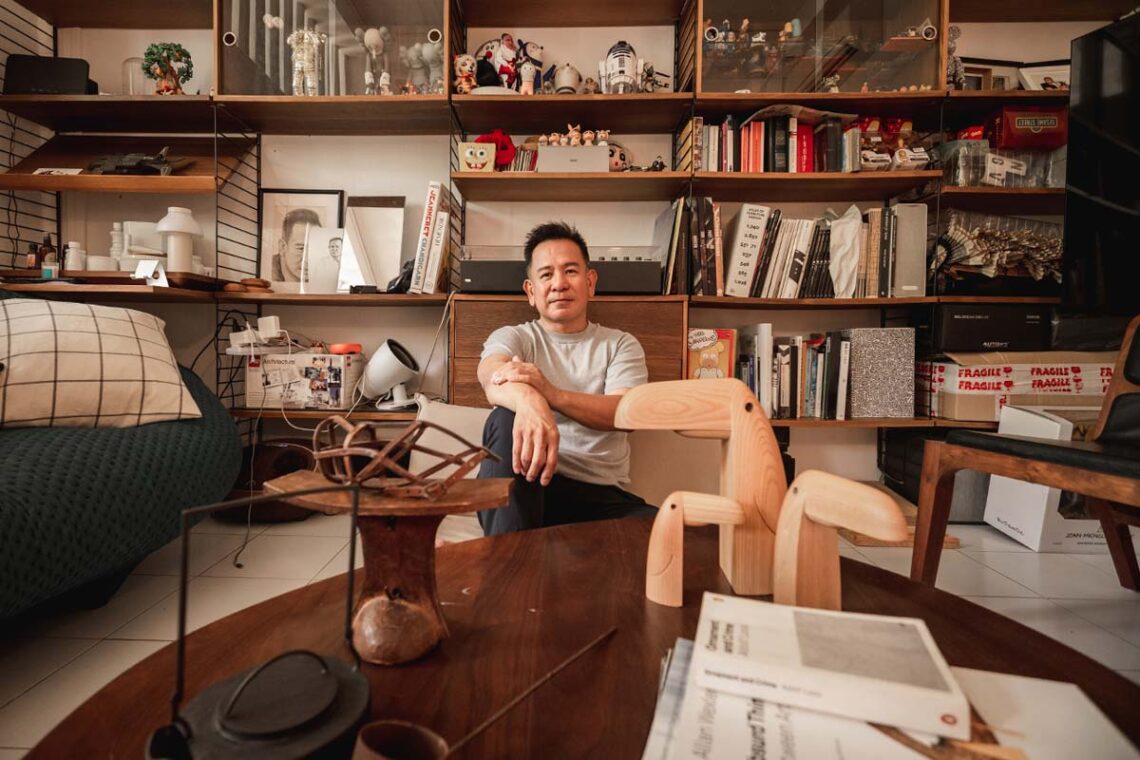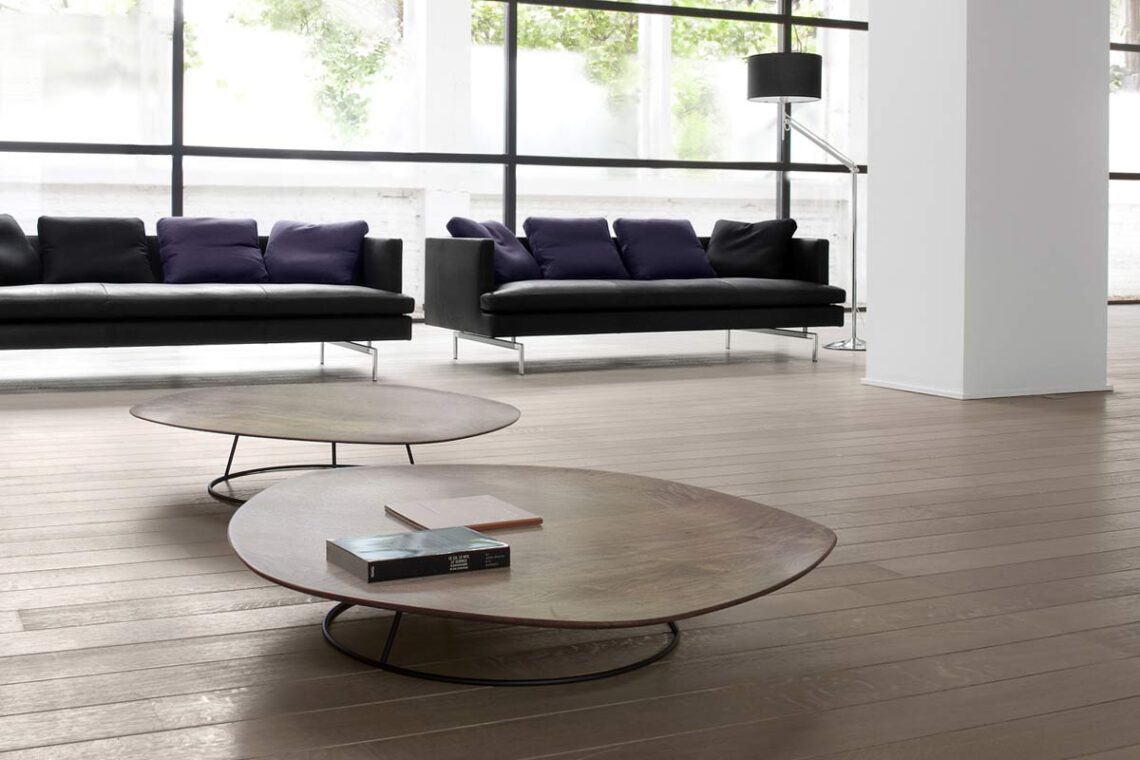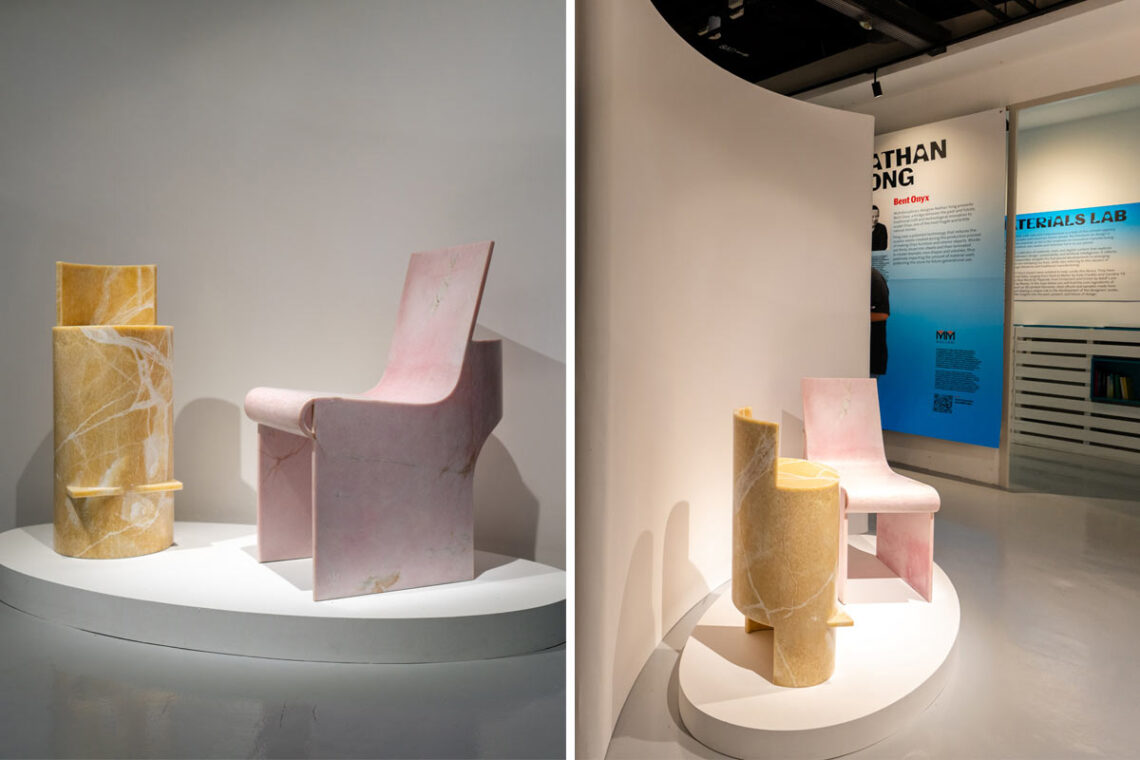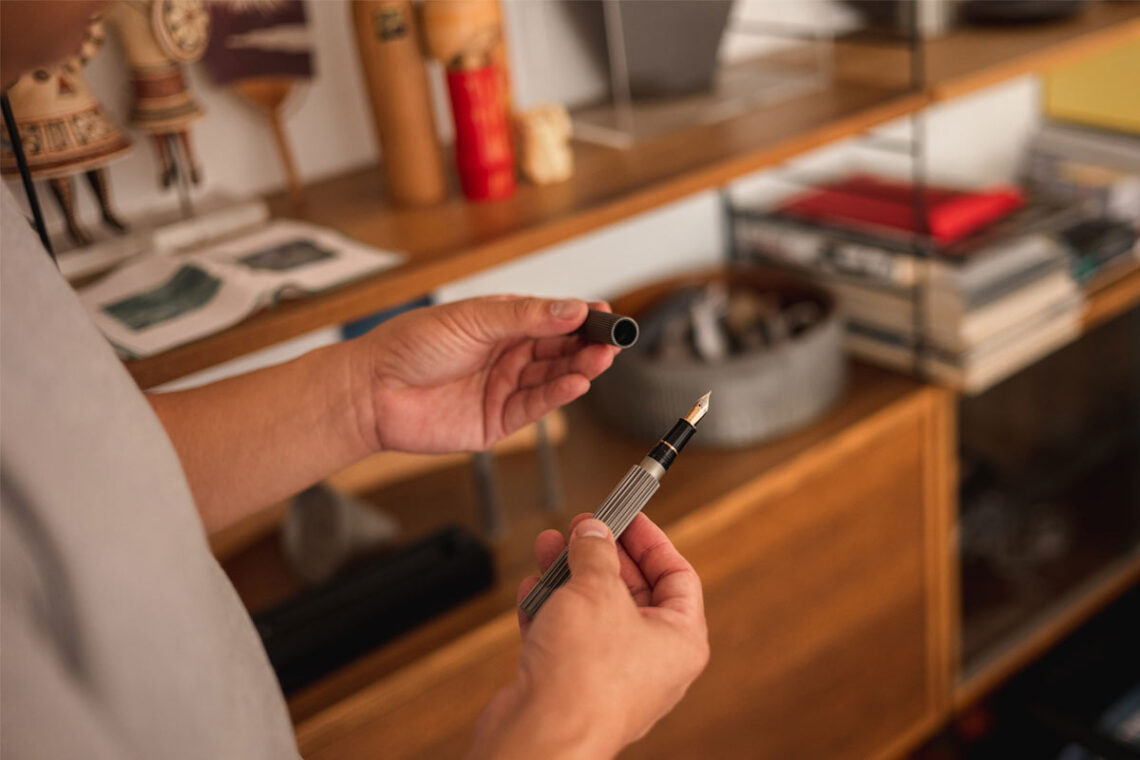Nathan Yong Writes His Own Playbook for Design
Local and international success in the furniture design sector takes grit no matter where in the world you are based – even more if you are charting new paths. Since the 1990s, Nathan Yong has carved out new market territory as a designer, brand developer, and retailer of contemporary furniture in Singapore, simultaneously establishing himself in the international design ecosystem. This self-made ‘designpreneur’ (and now educator) has excelled at assessing creative opportunities in balance with the realities of business viability.

Article by Narelle Yabuka.
Many in the design community in Singapore, and further afield, would be familiar with the name Nathan Yong. Some would even refer to him as the ‘poster designer’ of Singapore’s furniture industry. However apt such a label may be, Yong himself would surely be ambivalent toward it. He is, after all, also known for a no-nonsense demeanour.
Yong doesn’t pull his punches, and he’s not shy about admitting that. “What people say doesn’t worry me,” he states matter-of-factly as we discuss the nature of the design entrepreneurship he has driven over his three decades in the product and furniture industry. His is a character of conviction. Without doubt, this has been a key element of his success as a designer and design business owner – especially given the time when he began his career. In the 1990s, would-be independent Singapore-based contemporary furniture designers faced a largely untrodden road toward international success.
Paving the road ahead
Yong trained in industrial design at the Baharuddin Vocational Institute (graduating with a diploma in 1991 after its transition to Temasek Polytechnic), and later achieved a Master of Design from the University of New South Wales (2008). After cutting his teeth as a buyer in the world of furniture and product retail in the 1990s, he co-founded Air Division in 1999 and held the roles of Managing Director and Design Director.
The brand’s establishment was well timed with the cresting wave of interest in contemporary design from a lifestyle perspective, which was being driven by new magazines such as Wallpaper (founded in the UK in 1996). Yong and his colleagues purposely nudged the Singapore market toward an appetite for a more contemporary design expression with Air’s product offering. It wasn’t easy going, but Air became known in Singapore’s creative circles for its internationally resonant design quality.

Yong’s designs were manufactured in Asia, including Singapore, and captured attention regionally. He fondly recalls the opening of an Air franchise store in Jakarta’s Kemang district – a first step toward his grand plan (at the time) of mirroring the franchised success of brands such as Habitat from the UK. Clearly hitting the mark of the international design zeitgeist, Yong soon became one of the first Singapore furniture designers to attract major European and American brands to his work.
With Air, he entered the international trade fair and festival circuit, supported by the DesignSingapore Council (Dsg) with exhibition opportunities (such as SINGAPOREdge and 20/20 Movement in London) and grants (such as the Overseas Promotion Partnership Programme grant) from 2005. The first big international break came with an international production deal with Ligne Roset for the Break stool, Pebble table, and Telefunken TV console in 2008. This was soon followed by a second deal with American brand Design Within Reach for the Line console in 2010.

Identity as culture
Yong was quickly recognised at home with a President*s Design Award (P*DA) ‘Designer of the Year’ accolade in 2008. His relationship with Dsg continued thereafter with positions on the P*DA jury in 2011 and 2012, a commission to redesign the P*DA trophy in 2018, a mentoring role in the Council’s Business of Design initiative in 2019, and other activities.
Meanwhile, Yong departed from Air in 2009 but soon landed on his feet with a suite of new ventures: the studio Nathan Yong Design, a furniture brand named FOLKS Furniture, and the furniture retail business Grafunkt, the latter established with business partner Jefery Kurniadidjaja. Over the years, Yong and Kurniadidjaja have noted an ever-growing appreciation for good-quality design in the Grafunkt customer base, making the going easier than it was in the Air days of the early 2000s.

Today’s younger generation is so much more informed about the quality of products they consume.
— Nathan Yong
FOLKS was established in partnership with a Malaysian factory and was named in honour of the folk who dedicatedly produce Yong’s solid wood products. “They’re just normal people who turn up for work, then go home for a nice meal,” describes Yong. “With the name FOLKS, I wanted to bring people back to the roots of things,” he adds.
Those humble workers are making products that routinely find their way into leading showrooms and homes across the USA. “FOLKS’ biggest customers are Herman Miller and Design Within Reach in the US,” says Yong. The Line console was a precursor to much of that success, being developed into a popular suite of products including various credenzas, cabinets, and desks.

Good business sense
The significance of this success is not lost on Yong. “The reality is that Europeans and Americans don’t buy a lot of original design from Asia because of logistical issues – it’s too far, there’s too much risk tied to relatively unknown designers, and the value ascribed to craftsmanship from Asia is low. We need to bring higher value to Asian craft and production,” he says.
Having watched the maturation of the market for design in Singapore over the years, in conjunction with the coming of age of Singapore design, he concludes that the time has come when we no longer need to prove that Singapore design is “good enough” on the European stage.

I have friends in Southeast Asia and China who look at Singapore with the same awe that Singaporeans have for Japan. But for some reason, we lack pride. We don’t need to seek validation for what we create. I think we should own it.
— Nathan Yong

His seasoned advice for Singapore designers wishing to expand their reach is to seek business in China and India rather than solely focus on competing among thousands of names in Europe, bearing the disadvantages of geographic distance and relative anonymity.
“Many of the big European companies pay the designers through royalties only – not an upfront design fee,” he explains, “so why wouldn’t they choose Jasper Morrison over Nathan Yong? In that context, who is Nathan Yong?” The size of the markets in China and India, Yong explains, mean that furniture companies are well placed to pay designers fees. “They have purchasing power and the ability to export,” says Yong, sizing up the equation with a characteristically direct assessment.

He has already designed a range of office furniture for Chinese brand MIGE, which is in production. Among the seven pieces he designed is a bold task chair with a cantilevered tubular back rest. “The production standard may even be better than what you find in Europe,” says Yong, citing high levels of investment in plastic moulding and metalwork technologies, for example.
Design, design art, and value
In a retrospective exhibition at the National Design Centre in 2019, we were introduced to a new branch of Yong’s work – a leaning toward a more art-driven expression within furniture. The showcase In the Scheme of Things presented pieces dating back over 20 years of Yong’s design career, including his new adventures such as a sofa designed to depict a collection of trash bags, and a chair (discouraging of sitting) with spindly curving legs and an aggregated frame of segments of tubular metal.

He has since taken this direction further, developing explorations such as the Farewell to Reason series of ‘bent stone’ sculptures attributed to a new moniker, KSY (referencing Yong’s dialect name), and creating installations such as There in the Middleness at the Padang.

One of the ways to raise the perceived value of Asian design and craft is through the design/art platform, because people value it differently. Buyers appreciate the time taken to craft the work, and how the reason behind every artwork holds meaning to the creator. This goes far beyond a business transaction. This way, you can have longevity as a creator and also provide a new source of income for the craftsperson.
— Nathan Yong

At Singapore Design Week (SDW) 2023, Yong showcased his art-driven work with the Bent Onyx series in the Future Impact: Homecoming Showcase at the National Design Centre. The Future Impact showcase of Singapore design, curated by Tony Chambers and Maria Cristina Didero, had previously been presented during Milan Design Week 2023, where visitors marvelled at the material and its use.
“I would like to believe that Bent Onyx made visitors think differently about Asia,” reflects Yong, “recognising that the region contains very advanced production techniques and material explorations.” He is currently in talks with a European company about potential representation for the collection in Europe and North America.
Just a week prior, he saw the installation of a large-format commission using the same bending technology for laminated stone at The Macallan Store at the Raffles Hotel. A recommendation from Chambers led to the commission of the sculpture.

While the Bent Onyx pieces have furniture-like forms, there are clearly inherent questions about comfort and useability. Yong devised them principally as art pieces that celebrate the material and technology used to create them. “With collectible pieces, there’s always a perception of higher value in the production technology, as opposed to furniture pieces,” he says, even though the technology used by the producer offers a breakthrough in terms of a reduction of material wastage – with great potential for the design industry.
Meanwhile at the EMERGE @ FIND exhibition (curated by Suzy Annetta) during SDW 2023, he presented the Cord Bench – a 1.5-metre-long tube of 3D-printed concrete designed to function as public seating and produced by Singapore-based CES_INNOVFAB – a manufacturer of prefabricated and 3D-printed building components. Yong’s aim was to use concrete in a way that appears fluid and lightweight, upending expectations of a material that is often presented in a more brutalist manner.

Cultivating courage
This new direction demands a courageous attitude in viewers and consumers of design – a great leap from the cautious outlook that prevailed among Singapore’s furniture design consumers some 25 years ago, when Air had just been established. ‘Art design’ pieces, of course, are not for everyone. Indeed, they are perhaps principally driven by Yong’s own inner search for meaning and expression. Yet they have the potential, like every one of Yong’s past steps, to nudge the status quo.
In his role as the Programme Leader of the BA (Hons) Product Design course at LASALLE College of the Arts, Yong endeavours to cultivate a critical perspective and courageous spirit within students. “If one is fearful, and does not have a point of view as a designer, what values can one bring to the world?” he asks them, registering that an inclination to play it safe is a prevalent attitude among Singaporean students. If he has anything to do with it, they will graduate with a hunger to take Singapore’s product and furniture design sector to new heights.

Read our unfolding series of stories on creative discovery and making life in Singapore ‘Better by Design’.




